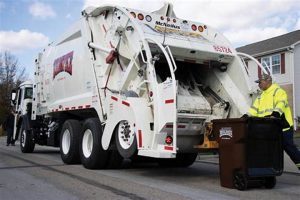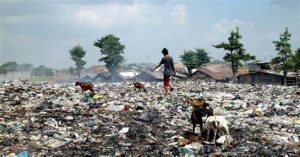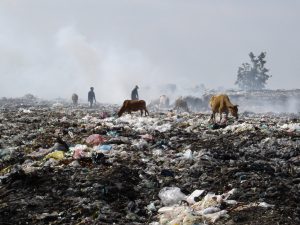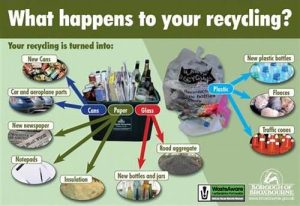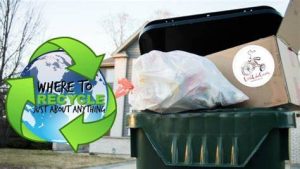What are the benefits of recycling?
Recycling offers numerous environmental, economic, and social benefits. Here are some of the key advantages of recycling:
Conservation of Natural Resources: Recycling reduces the need for extracting and processing raw materials like timber, minerals, and oil. This conserves natural resources, ensuring they are available for future generations.
Energy Savings: Recycling often requires less energy than producing items from virgin materials. For example, recycling aluminum saves up to 95% of the energy required to create new aluminum from bauxite ore.
Reduction of Greenhouse Gas Emissions: Recycling reduces the carbon footprint of manufacturing processes. Fewer emissions of greenhouse gases contribute to mitigating climate change.
Waste Reduction: Recycling decreases the amount of waste sent to landfills and incinerators. This, in turn, reduces the burden on these waste disposal methods and prolongs their lifespan.
Land and Water Pollution Prevention: By reducing the volume of waste in landfills and incineration, recycling helps prevent soil and water pollution caused by leachate and emissions from waste disposal sites.
Economic Benefits: Recycling industries create jobs and stimulate economic growth. The recycling sector involves activities such as collection, processing, and manufacturing of recycled materials, all of which contribute to the economy.
Energy Independence: By reducing the reliance on fossil fuels for manufacturing and transportation, recycling contributes to energy independence and security.
Resource Efficiency: Recycling encourages the efficient use of materials. It promotes the concept of a circular economy where resources are used, reused, and repurposed rather than disposed of.
Promotion of Sustainable Practices: Recycling raises awareness about responsible consumption and waste management, encouraging individuals and businesses to adopt sustainable practices.
Preservation of Biodiversity: By reducing habitat destruction and pollution associated with resource extraction, recycling helps protect ecosystems and biodiversity.
Community Engagement: Recycling initiatives often involve communities, fostering a sense of environmental responsibility and promoting cooperation among residents.
Education and Awareness: Recycling programs can serve as educational tools, teaching people about the environmental impact of their choices and how they can make a difference.
Resource Diversity: Recycling reduces the need to rely solely on a few finite resources and encourages the use of a variety of materials.
Waste-to-Energy: Some recycling processes can generate energy, contributing to the generation of cleaner power sources.
In summary, recycling is an essential component of sustainable living and environmental stewardship. It not only conserves resources and energy but also helps reduce pollution and create economic opportunities while promoting a more responsible and environmentally conscious society.
Also Like:- 7 Best Epoxy Resin Safety Tips
What does recycling mean for your university?
The impact of recycling at a university can vary depending on the specific initiatives and practices implemented by that institution. Here are some ways recycling can be significant for a university:
Environmental Responsibility: Recycling at a university demonstrates a commitment to environmental sustainability. It sets an example for students, faculty, and the broader community, emphasizing the importance of responsible resource management.
Waste Reduction: Recycling helps reduce the amount of waste sent to landfills or incinerators on campus. This not only extends the lifespan of waste disposal facilities but also decreases associated environmental impacts.
Cost Savings: Effective recycling programs can lead to cost savings by reducing waste disposal fees and, in some cases, generating revenue from the sale of recyclable materials.
Educational Opportunities: Universities can use recycling programs as educational tools. They can raise awareness about the environmental and social implications of waste and recycling, engaging students in discussions about sustainability.
Research and Innovation: Universities often engage in research related to recycling technologies, waste management, and sustainable materials. These research efforts can lead to innovations and solutions in the field.
Community Engagement: Recycling initiatives can involve the campus community, including students, faculty, and staff. Participation in recycling programs can foster a sense of shared responsibility for the environment.
Partnerships: Universities can collaborate with local governments, recycling organizations, and businesses to improve recycling infrastructure and expand recycling opportunities in the surrounding community.
Sustainable Procurement: Universities can also promote recycling and sustainability by purchasing recycled or eco-friendly products, setting an example for responsible consumption.
Reducing Carbon Footprint: Recycling reduces the energy and resources needed for manufacturing new products from virgin materials, thus contributing to the reduction of the university’s carbon footprint.
Regulatory Compliance: In some regions, there may be regulations or incentives related to recycling and waste management. Universities need to comply with these regulations and can benefit from any associated incentives.
Campus Cleanliness: Effective recycling programs can help keep the campus clean by reducing litter and promoting responsible disposal of waste.
Promoting Student Initiatives: Recycling at universities often encourages students to take the initiative in promoting sustainability and waste reduction on campus. Student-led recycling clubs or organizations can play a crucial role.
In summary, recycling at a university reflects a commitment to sustainability, education, and community engagement. It can lead to cost savings, research opportunities, and a reduced environmental impact, while also providing practical lessons in responsible resource management for students and the broader community.
What are great university recycling ideas?
1. Understand waste management practices
Waste management practices involve the collection, transportation, disposal, and recycling of waste materials to minimize their impact on the environment and public health. Proper waste management is essential for maintaining a clean and sustainable environment. Here are some key aspects of waste management practices:
Waste Segregation: This is the first step in waste management. It involves sorting waste into different categories such as organic, recyclable, and non-recyclable materials. This makes it easier to handle and process waste efficiently.
Collection: Once waste is segregated, it is collected from households, businesses, and public areas by waste collection services. This can be done through curbside pickup, drop-off centers, or scheduled collection days.
Transportation: Collected waste is then transported to various facilities for further processing. This may involve using trucks, containers, or other specialized vehicles to move waste to recycling centers, landfill sites, or incineration plants.
Recycling: Recycling is the process of converting waste materials into new products. It helps conserve resources and reduce the environmental impact of waste. Materials such as paper, cardboard, glass, plastics, and metals can often be recycled.
Composting: Organic waste, such as food scraps and yard waste, can be composted to create nutrient-rich soil for gardening and agriculture. Composting reduces the volume of waste in landfills and lowers greenhouse gas emissions.
Waste-to-Energy: Some waste materials can be incinerated in waste-to-energy facilities, where they are burned to generate electricity or heat. This can be an effective way to reduce the volume of waste and produce energy simultaneously.
Landfill Disposal: Non-recyclable and non-compostable waste is often disposed of in landfills. Landfills are carefully engineered to minimize environmental impact and reduce the risk of contamination.
Hazardous Waste Management: Specialized practices are used for hazardous waste, which includes chemicals, medical waste, and other dangerous materials. These materials are handled, transported, and disposed of with strict regulations to protect the environment and public health.
Public Awareness and Education: Encouraging the public to reduce, reuse, and recycle is a critical aspect of waste management. Education campaigns aim to raise awareness about the importance of responsible waste disposal.
Regulations and Compliance: Governments and regulatory bodies often establish laws and regulations to ensure that waste management practices are safe and environmentally responsible. Compliance with these regulations is crucial for waste management providers and businesses.
Waste Reduction: The most effective waste management practice is waste reduction. This involves minimizing waste generation by reusing items, reducing consumption, and making environmentally conscious choices.
Effective waste management practices are essential for preserving natural resources, reducing pollution, and mitigating the negative impacts of waste on our environment. These practices contribute to a more sustainable and healthier future for our planet.
2. Gather and analyse data
Certainly! Gathering and analyzing data is an essential process in various fields, including business, science, and research. Here’s a general overview of how to gather and analyze data:
1. Define Your Objectives:
Clearly outline your research objectives or what you want to achieve with the data analysis.
2. Data Collection:
Identify the data sources: Determine where and how you will collect the data. It could be through surveys, interviews, observations, databases, web scraping, or other methods.
Ensure data quality: Collect high-quality data to prevent inaccuracies or bias.
3. Data Cleaning:
Remove duplicates, outliers, and errors in the data.
Handle missing data appropriately, which may involve imputation or data removal.
4. Data Organization:
Store data in a structured format, such as a spreadsheet or database, for easy retrieval and analysis.
5. Data Analysis:
Choose appropriate statistical and analytical methods based on your objectives.
Apply data visualization techniques to gain insights and identify patterns.
Use statistical software (e.g., Python, R, Excel) to perform the analysis.
6. Interpretation:
Interpret the results and draw conclusions based on your analysis.
Relate your findings to the initial objectives and research questions.
7. Reporting:
Create a report or presentation summarizing the data, analysis, and findings.
Include visualizations and clear explanations for a broader audience.
8. Make Informed Decisions:
Use the insights gained from the data analysis to make informed decisions, whether in business, research, or any other context.
9. Continuous Improvement:
Analyzing data is an iterative process. Use feedback from your analysis to refine your data collection and analysis methods.
10. Ethics and Privacy:
Ensure that you handle data in an ethical and privacy-conscious manner, respecting confidentiality and data protection regulations.
Remember that the specific methods and tools you use will depend on your project and objectives. Whether you’re analyzing sales data, conducting scientific research, or making business decisions, the process of gathering and analyzing data is a crucial step in informed decision-making.
3. Standardise bins and labelling
Standardizing bins and labeling is a common practice in data analysis and statistics to ensure consistency and clarity when working with categorical or numerical data. Here are some guidelines on how to standardize bins and labeling:
Consistent Bin Widths: When creating bins for numerical data, ensure that the bin widths are consistent. For example, if you are categorizing ages, you might create bins like “0-10,” “11-20,” “21-30,” and so on. Each bin should cover the same range of values to maintain uniformity.
Clear and Descriptive Labels: Labels for bins should be clear and descriptive. They should convey the meaning of the data within the bin. For example, instead of “Bin 1,” use labels like “Low Income,” “Medium Income,” and “High Income” to categorize income levels.
Avoid Overlapping Bins: Ensure that bins do not overlap. In the age example, someone who is 20 years old should only fall into one bin, not multiple. This prevents ambiguity in data analysis.
Include Edge Cases: Make sure that your bins account for edge cases. In the age example, you might create a bin for “60 and above” to include all ages 60 and older.
Use Logical Ordering: Arrange the bins in a logical order. For example, for education levels, you might use the following order: “High School,” “Associate’s Degree,” “Bachelor’s Degree,” “Master’s Degree,” “Ph.D.”
Use Intervals or Ranges: When working with numerical data, consider using intervals or ranges for labeling. For instance, instead of labeling bins as “5,” “10,” “15,” etc., you can use “0-5,” “6-10,” “11-15,” which makes it clear that the values in the bin belong to a specific range.
Consistency Across Data Sets: If you have multiple data sets or variables, try to maintain consistent binning and labeling across them. This makes it easier to compare and combine data.
Document Your Choices: Keep a record of how you standardized the bins and labeling. This documentation will be helpful for you and others when interpreting the data.
Consider the Audience: Think about who will be using the data. Ensure that the bin labels are understandable to the intended audience. For example, if you’re working with medical data, the terminology should be clear to healthcare professionals.
Review and Revise: Periodically review your binning and labeling to ensure that they still accurately represent the data and meet your analysis needs. Make revisions as necessary.
By following these guidelines, you can standardize bins and labeling in your data, making it easier to work with, interpret, and communicate the results effectively.
4. Set a university recycling target
Setting a university recycling target is a proactive step in promoting sustainability and responsible environmental practices on campus. To establish a meaningful and achievable recycling target, follow these steps:
Assess Current Recycling Practices:
Begin by assessing your university’s current recycling practices. Understand what materials are being recycled and the effectiveness of existing recycling programs.
Identify Key Stakeholders:
Identify key stakeholders who will be involved in setting and achieving the recycling target. This may include university administrators, facilities management, sustainability committees, students, and staff.
Research Applicable Regulations and Guidelines:
Familiarize yourself with local, regional, and national regulations and guidelines related to recycling and waste management. Compliance with these regulations is essential.
Set Specific, Measurable, Achievable, Relevant, and Time-Bound (SMART) Goals:
Define your recycling target using the SMART criteria. For example, you might set a goal like, “Increase recycling rates by 20% within the next academic year.”
Determine What to Measure:
Decide which recycling metrics you will track to assess progress. This may include the total amount of waste recycled, recycling rates by material type, or waste diversion rates.
Involve the Campus Community:
Engage the university community, including students, faculty, and staff, in the recycling effort. Encourage their participation and feedback in setting the recycling target.
Establish a Baseline:
Determine the current recycling baseline by collecting data on existing recycling rates and practices. This will provide a starting point for measuring progress.
Create an Action Plan:
Develop a detailed action plan outlining specific strategies, initiatives, and responsible parties to achieve the recycling target. Consider initiatives like improving recycling infrastructure, educational campaigns, and waste reduction measures.
Allocate Resources:
Ensure that the university allocates the necessary resources, such as recycling bins, educational materials, and personnel, to support the recycling initiatives.
Monitor and Report Progress:
Regularly monitor progress toward the recycling target and report the results to the university community. Transparency is essential to maintain motivation and accountability.
Celebrate Milestones:
Recognize and celebrate achievements and milestones along the way. Positive reinforcement can inspire further participation.
Adjust and Improve:
Be willing to adjust your recycling target and strategies if needed. If you find that your initial target was too ambitious or not ambitious enough, modify it accordingly.
Sustain Commitment:
Ensure that the commitment to recycling and sustainability remains a long-term focus for the university, even after achieving initial goals.
Promote Education and Awareness:
Continuously educate the university community about the importance of recycling and sustainability. Awareness campaigns can help drive participation.
Collaborate with External Partners:
Explore partnerships with local recycling organizations, waste management companies, and government agencies to leverage resources and expertise.
By following these steps, your university can set a meaningful recycling target and work towards a more sustainable and environmentally responsible campus community.
5. Run a competition
Running a competition can be a fun and engaging way to achieve various goals, such as promoting a product or service, fostering creativity, or building a sense of community. Here are the steps to organize and run a successful competition:
Define Your Goals and Objectives:
Clearly outline the purpose of the competition. What do you aim to achieve? Whether it’s increasing brand awareness, gathering creative ideas, or simply having fun, having clear objectives is crucial.
Select a Competition Type:
Choose the type of competition that aligns with your goals. Common types include art contests, writing competitions, photo contests, giveaways, and skill-based challenges.
Set a Budget:
Determine the budget for the competition. This will impact the scale, prizes, and marketing efforts you can allocate to the event.
Choose Prizes:
Offer attractive and relevant prizes that will motivate participants. Prizes could include cash rewards, products, scholarships, or experiences.
Define Competition Rules and Guidelines:
Create a set of clear and comprehensive rules and guidelines for participants. This should include eligibility criteria, entry requirements, deadlines, and judging criteria.
Select Judges or Jury:
If your competition involves subjective judging, select qualified judges or a jury with expertise in the relevant field. Ensure their impartiality and transparency.
Create a Timeline:
Develop a detailed timeline that includes key dates such as the competition launch, entry submission deadlines, judging periods, and the announcement of winners.
Promote the Competition:
Use various marketing channels to promote the competition, such as social media, email marketing, your website, and partnerships with influencers or organizations in your niche.
Provide Clear Entry Instructions:
Make it easy for participants to enter by providing clear and concise instructions. Include details on how to submit entries, including any required formats.
Set Up an Entry Platform:
Choose a platform for participants to submit their entries. This could be a dedicated website, social media, or a third-party contest hosting platform.
Manage Submissions:
Monitor and manage the incoming submissions to ensure they meet the criteria and follow the rules.
Judging Process:
Conduct the judging process according to the pre-established criteria. Ensure fairness and transparency in the selection of winners.
Announce Winners:
Publicly announce the winners, and if possible, recognize all participants for their efforts. Share the winning entries and celebrate the success.
Distribute Prizes:
Deliver the prizes to the winners promptly. Ensure they receive their rewards as promised.
Collect Feedback:
After the competition, gather feedback from participants and judges to learn what worked well and what could be improved for future competitions.
Follow Up and Promote the Results:
Continue to engage with the competition participants and use the results to promote your brand or cause. Share the success stories and outcomes.
Evaluate ROI:
Assess the return on investment (ROI) to determine if the competition achieved your goals and if it’s worth repeating in the future.
Plan for the Future:
Based on the lessons learned, consider planning future competitions, possibly with improvements and adjustments.
Remember that the success of your competition depends on effective planning, clear communication, and delivering on your promises. A well-organized competition can be a memorable and rewarding experience for both participants and organizers.
6. Run events to spread recycling ideas
Certainly! Running events to spread recycling ideas is a great way to promote environmental awareness and encourage people to adopt sustainable practices. Here’s a plan for organizing such events:
Event 1: Recycling Workshop
Aim: To educate participants about the importance of recycling and how to do it effectively.
Date and Time: Saturday, November 12, 2023, 10:00 AM – 2:00 PM.
Location: Community Center or Local Park.
Activities:
Recycling 101 presentation.
Hands-on sorting of recyclables.
DIY recycling crafts.
Q&A session with an environmental expert.
Promotion:
Create event flyers and share them on social media.
Partner with local schools and community organizations.
Engage local influencers to promote the event.
Event 2: Recycling Drive
Aim: To collect recyclables from the community.
Date and Time: Saturday, December 3, 2023, 9:00 AM – 3:00 PM.
Location: Local school or community center parking lot.
Activities:
Collection of paper, glass, plastic, and metal recyclables.
Educational booths about recycling.
Prizes for the most recyclables collected.
Promotion:
Distribute flyers in the community.
Contact local businesses for sponsorship.
Collaborate with local recycling centers.
Event 3: Recycling Art Exhibition
Aim: To showcase the creativity of recycling.
Date and Time: Saturday, January 21, 2024, 2:00 PM – 6:00 PM.
Location: Local art gallery or cultural center.
Activities:
Display art and crafts made from recycled materials.
Artist talks and workshops.
Recycling art contest for the community.
Promotion:
Collaborate with local artists and art organizations.
Promote through local media and social platforms.
Invite schools to participate and display their students’ artwork.
Event 4: Environmental Film Screening
Aim: To raise awareness through powerful documentaries.
Date and Time: Friday, February 17, 2024, 7:00 PM – 9:00 PM.
Location: Local theater or community hall.
Activities:
Screening of environmental documentaries.
Panel discussion with local experts.
Networking with like-minded individuals.
Promotion:
Create event posters and online event pages.
Reach out to local environmental groups.
Partner with eco-friendly businesses for sponsorship.
Event 5: Recycling Awareness Walk
Aim: To promote recycling while fostering community spirit.
Date and Time: Saturday, March 24, 2024, 9:00 AM – 12:00 PM.
Location: Starting at the local park and ending at a recycling center.
Activities:
A guided walk through the community.
Educational checkpoints along the route.
Recycling center tour.
Promotion:
Create event T-shirts and distribute them to participants.
Encourage local schools and clubs to join the walk.
Share updates on social media with event hashtags.
These events should help spread recycling ideas, engage the community, and encourage individuals to take a more active role in protecting the environment. Tailor your promotions and activities to your local context and audience for the best results.
7. Change procurement contracts and practices
Changing procurement contracts and practices to be more sustainable and environmentally friendly is a crucial step in promoting responsible consumption and reducing the environmental impact of businesses and governments. Here are some key strategies and actions that can be taken to achieve this:
1. Sustainability Clauses in Contracts:
Include sustainability clauses in procurement contracts: Integrate clear and enforceable sustainability criteria into procurement contracts. These clauses should outline expectations regarding environmental standards, ethical sourcing, and sustainable practices.
2. Supplier Evaluation:
Implement supplier evaluations: Regularly assess the environmental and ethical performance of suppliers. Award contracts to vendors who meet or exceed sustainability standards, encouraging competition in sustainable practices.
3. Sustainable Product Requirements:
Specify eco-friendly product requirements: Clearly define product specifications that prioritize environmental attributes, such as energy efficiency, recyclability, and reduced waste generation. Encourage the use of recycled materials and products with minimal environmental impact.
4. Local Sourcing:
Promote local and regional sourcing: Encourage the procurement of goods and services from local or regional suppliers to reduce transportation-related emissions and support the local economy.
5. Renewable Energy Procurement:
Pursue renewable energy contracts: Consider sourcing energy from renewable sources like wind or solar, and encourage suppliers to do the same to reduce the carbon footprint of operations.
6. Sustainable Packaging:
Reduce waste through sustainable packaging: Encourage suppliers to use minimal, recyclable, or biodegradable packaging, and promote the reduction of single-use plastics in packaging.
7. Fair Labor Practices:
Adopt fair labor standards: Ensure that suppliers follow ethical labor practices, including fair wages, safe working conditions, and adherence to human rights principles.
8. Transparency and Reporting:
Require transparency and reporting: Mandate that suppliers provide detailed reports on their sustainability efforts, which can include environmental performance data, ethical practices, and progress toward sustainability goals.
9. Eco-friendly Transportation:
Encourage green transportation: Include provisions in contracts that promote the use of eco-friendly transportation for product delivery, such as electric or hybrid vehicles.
10. Incentives and Penalties:
Implement incentives and penalties: Use financial incentives for suppliers who meet or exceed sustainability standards, and apply penalties for those who do not comply with the contract’s sustainability clauses.
11. Collaboration with Sustainability Organizations:
Collaborate with sustainability organizations: Partner with non-governmental organizations (NGOs) or industry groups that specialize in sustainability to set benchmarks and best practices for procurement contracts.
12. Training and Capacity Building:
Provide training and capacity building: Offer training and resources to procurement professionals on sustainable practices and the importance of integrating sustainability into procurement decisions.
13. Continuous Improvement:
Promote a culture of continuous improvement: Encourage suppliers to continually improve their sustainability efforts by setting long-term sustainability goals and regularly reviewing progress.
14. Public Procurement Policies:
Advocate for public procurement policies: Collaborate with government agencies to create and promote policies that require sustainable procurement practices in the public sector.
By implementing these strategies and practices, organizations can significantly reduce their environmental impact and promote sustainable and responsible consumption. These efforts not only benefit the environment but also enhance an organization’s reputation and contribute to long-term economic sustainability.
8. Address low-threshold areas
Addressing low-threshold areas typically refers to identifying and resolving issues in areas where problems or challenges are easily identifiable or where intervention can be straightforward. These areas may include locations, situations, or aspects of society that require specific attention and action. Here are some steps to address low-threshold areas effectively:
Identify Priority Areas:
Begin by identifying the low-threshold areas that need attention. These could be related to social, economic, environmental, or safety issues.
Gather Data and Information:
Collect relevant data and information to understand the nature and extent of the issues in these areas. This may involve surveys, interviews, research, or consultations with affected communities.
Engage Stakeholders:
Involve relevant stakeholders, including local communities, government agencies, NGOs, and experts, to collaborate on addressing these low-threshold areas. Their input is invaluable in understanding the issues and developing effective solutions.
Set Clear Objectives:
Define clear and measurable objectives for addressing the identified challenges. Ensure that these objectives are specific, achievable, and time-bound.
Develop Action Plans:
Create action plans that outline the steps to be taken to address the issues. These plans should include roles and responsibilities, timelines, and available resources.
Allocate Resources:
Allocate the necessary financial, human, and logistical resources to implement the action plans effectively. Securing funding and support is crucial.
Implement Solutions:
Put the action plans into motion, addressing the low-threshold areas through practical and sustainable interventions. This may involve infrastructure development, policy changes, community programs, or other initiatives.
Monitor Progress:
Continuously monitor and evaluate the progress of the initiatives in these areas. Regular assessment ensures that the objectives are being met and allows for adjustments if needed.
Feedback and Adaptation:
Gather feedback from the affected communities and other stakeholders. Use this feedback to make necessary adaptations to the interventions and ensure they remain effective.
Community Involvement:
Encourage active participation of the communities living in or near the low-threshold areas. Their insights and involvement are key to sustainable solutions.
Education and Awareness:
Raise awareness about the challenges in these areas and educate the public on the importance of addressing them. This can foster a sense of responsibility and support for the initiatives.
Advocacy and Policy Changes:
If necessary, advocate for policy changes at the local, regional, or national level to provide a legal framework for addressing low-threshold areas.
Collaboration and Partnerships:
Collaborate with other organizations, government agencies, and stakeholders to leverage their expertise and resources for more effective problem-solving.
Long-Term Sustainability:
Ensure that solutions for low-threshold areas are designed with long-term sustainability in mind, addressing not just immediate challenges but also preventing future issues.
Celebrate Successes:
Celebrate and communicate the successes and positive outcomes achieved in these areas to inspire and engage the wider community in similar efforts.
Addressing low-threshold areas requires a proactive and collaborative approach, with a focus on creating positive and lasting change for communities and society as a whole.


